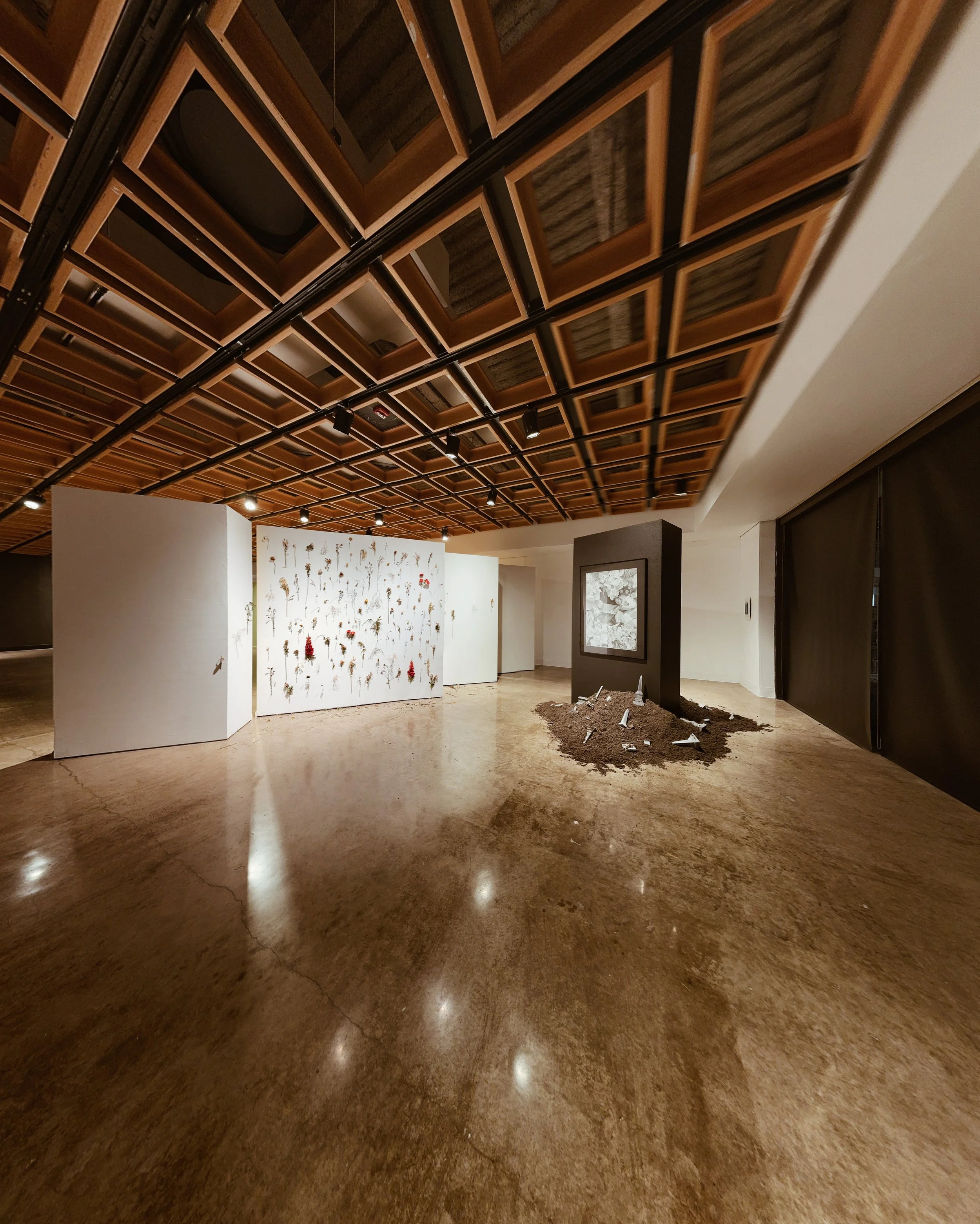Glynnis Baker is a multidisciplinary artist exploring themes of micro- and macrocosmic death, using a wide range of materials and techniques to explore the transient nature of existence. Their practice is heavily based on material exploration and complex processes.
I think of my practice as dwelling inside a labyrinthine house. At its core is my reckoning with my own mortality, a tightly wound center room I cannot avoid. Surrounding it are chambers filled with echoes of others’ deaths- the grief of family and friends, the fears I carry for them, the rituals I witness as an outsider without religion. Further down the corridors are wider passages that hold collective losses: genocides, famines, and disasters that map out the world’s repeated negotiations with death. At the very edges of this house, the walls give way to the dread of planetary catastrophe- climate change, authoritarianism, and the possibility of uninhabitable futures.
My work emerges from curiosity as much as fear. I am drawn to the ways cultures have built practices, monuments, and material legacies around death, even as I question their impermanence. This curiosity drives me into long research tangents- medieval histories, burial traditions, craft processes- and just as often into the workshop, where I attempt to reconstruct the objects and materials I encounter. The studio is a testing ground where pastel drawings sit alongside experiments in glass and stone. I return without fail to the act of drawing as the heart of my practice, but I allow the work to branch into conceptual and technical detours whenever the work necessitates a new solution to an age-old question.
My labyrinth house contains both a micro- and macrocosmic universe. It informs my work: the scale, the materials, and the ways I move between them, while being filtered through an alienated autistic lens. It holds intimacy both close and at arm’s length, seeking human connection through carefully considered questions. In the end, my practice is less about arriving at answers than about creating pauses where viewers might reflect and see themselves in the shared inevitability of mortality, and recognise the humanness of our existence.

